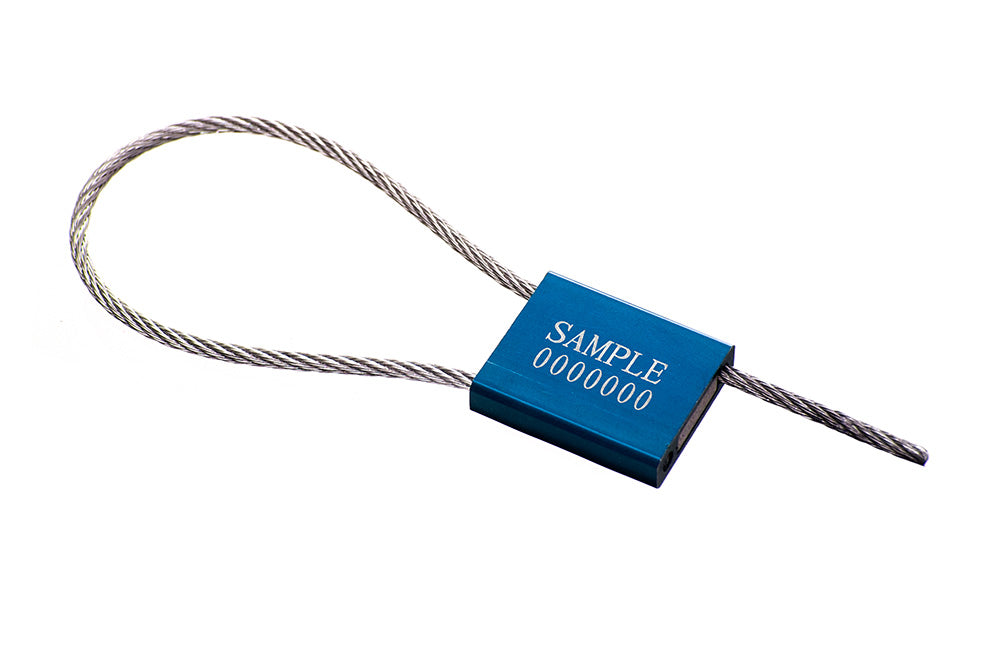The primary purpose of using cable seals or other types of security seals is to safeguard a container from tampering or misuse by unauthorized entities. Sealed packages ensure that the package cannot be opened without damaging the seal and it reaches the concerned owner securely. These temper evident security seals, further enable the organizations or consumers to easily detect that their package has been tampered with or someone unauthorized tried to open a protected item.
The cable seals are used for a variety of purposes, including transportation containers, ATM cassettes, airport security deliveries, etc. The high security cable seals are designed to enhance their sturdiness by incorporating metal as cable wire. They are designed with the need to enhance security levels that now require greater strength and specific tools to open these cable wires of the seals. The cable seals can vary in thickness, size, length, and type depending on their application.
How to choose cable seals?
Choosing the appropriate cable seal that serves your purpose is an equally significant task to ensure the security of the package or the container than anything else. The cable seals available in the market vary in size, thickness, and length depending on their application. For instance, longer seals with thinner cables can be turned and bent with ease. They can be used to fit in places where other bigger seals won’t work.
The heavy-duty cable seals provide more sturdiness and will be difficult to break, cut, or temper with but require sufficient space to bend and lock them as they are sturdy and stiff. These cable seals are popularly used, for securing tanks and truck valves, hoppers, meter boxes, control panels, etc.
Cable seals are a perfect alternative for tagging machinery, vehicles, and high-value assets that the owner does not need to open frequently and does not want to monitor access to keys.
Proper handling of cable seals
Like any kind of seal, proper handling, control, record keeping, and inspection is necessary for cable seals as well. To properly use the cable seal, the cable must be inserted parallel to itself with a firm push into the hole on the same side as its attachment and extends from the lock body.
When using pull-up cable seals, one must ensure that the seal is pulled as tightly as possible without damaging the item or device it is being applied to. It is necessary as loose seal cable is vulnerable to manipulation.
For the removal of cable seals, one can use a good quality bypass type shear or a cable cutter for cable seals with light thickness. The cable seals cannot be reused once applied, so cut the excess cable wire after sealing the container. You can also destroy the seal body after use by crushing it with a hammer or destroying the marking with a sharp tool.
Conclusion
The seal cables designed for high-security levels are also called barrier seals. They are made of metal or metal alloys to increase their sturdiness. There are various other types of security seals that you can get from the best seller to suit your need.

